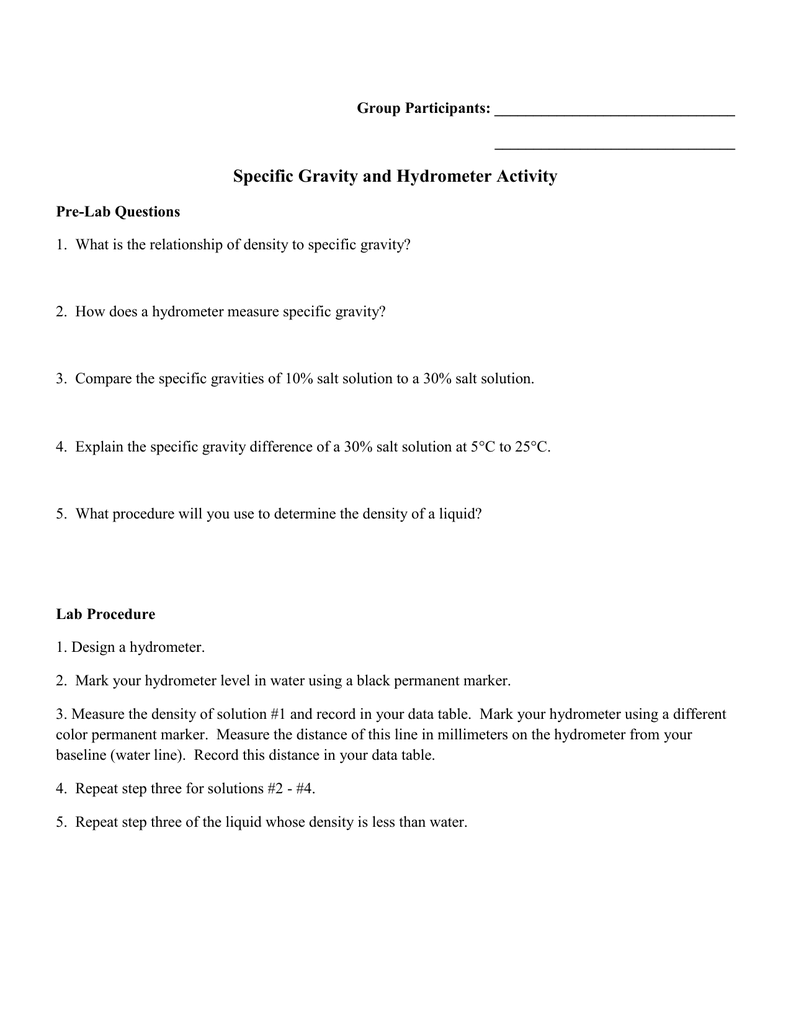

“Soil Composition.” Geotechnical Engineering: Principles and Practices. ReferencesĪSTM D854-14, Standard Test Methods for Specific Gravity of Soil Solids by Water Pycnometer, ASTM International, West Conshohocken, PA, 2014, Ĭoduto, Donald P., and Man Yeung. Thus, the Gs value of the soil may be affected.įurther research is suggested in order to reduce the possibility of misleading results. Differences in water temperature may cause the density of water to fluctuate.Loss of soil sample while pouring it into the pycnometer.Errors in the scale tare process can affect the mass measurements of the pycnometer, water, and soil.Furthermore, a Gs value of 2.52 would be used for future calculations in order to be consistent and fully characterize the soil sample being tested.įinally, possible sources of error that could be attributed to the relative low Gs value of the soil are the following: Sand is a type of coarse-grained soil and quartz is a common example of it. Hence, the visual inspection of the soil co-related with the results of the grain size distribution tests, as the soil mainly consisted of sand. The remaining 6.6% of fines could be composed of silt and/or clay. The remaining 6.6% of fines were not classified due to the absence of information about them. From the 9.9 % fines, 3.3 % were determined to be silt.

However, the sieve analysis and hydrometer tests state that the soil sample consisted of 7% gravel, 83.1 % sand, and 9.9% fines.

Based on visual inspection of the soil, the laboratory reporter predicted that the soil sample was mainly composed of quartz and dark-colored sand due to the pale yellow and dark-brown colors of it, respectively. In addition, the Gs value calculated under lab conditions cannot be compared with theoretical values of specific soils, as the soil sample tested is composed of a variety of soil types. Pycnometer Containing Water and Soil Sample. This will affect the weight of the soil and will decrease its density. Figure 2 depicts organic matter floating inside the pycnometer, where the soil sample is submerged under water. A lower Gs value for the soil is reasonable due to the high amount of organic matter presented in it.

Hence, the actual weight of the soil would be less than the one measured. The density calculation would be affected, as a considerable portion of organic matter presented in the soil sample would float after water is added to it. Thus, the density calculation of the sample, based on the soil’s total weight, would be affected. The relative low Gs value of the soil implies that a high content of organic mater was presented in it. Thus, the calculated Gs was 1.03 times lower than the minimum theoretical Gs value of soils, which is 2.60 (Coduto, 2011). The Gs value range should be between 2.60 and 2.80 (Coduto, 2011). After conducting the standard test method for the specific gravity of soil solids by water pycnometer (ASTM D854-14), the calculated Gs value of the soil sample was 2.52. The specific gravity of a soil, Gs, is defined as the ratio of its density to the density of water. Phase diagram B is a modified version of phase diagram A due to the incorporation of soil parameters. In the following equations, letters A and B indicate the phase diagram where a calculated parameter is located. A phase diagram was created to provide a visual representation of the volumes and masses of the pycnometer, water, and soil. The following sample calculations were conducted in order to create a set of phase diagrams, as shown in Figure 1. Mass of Pycnometer, Mp + Mass of Water, Mw + Mass of Soil, Ms: 700.03 g Mass of Pycnometer, Mp + Mass of Water, Mw: 669.85 g Specific gravity is a unitless value that relates the density of a substance/soil and the density of water. The following data was collected at laboratory conditions for the completion of the specific gravity lab. The specific gravity lab was conducted on a soil sample collected at the southeastern portion of the FGCU Food Forest.


 0 kommentar(er)
0 kommentar(er)
